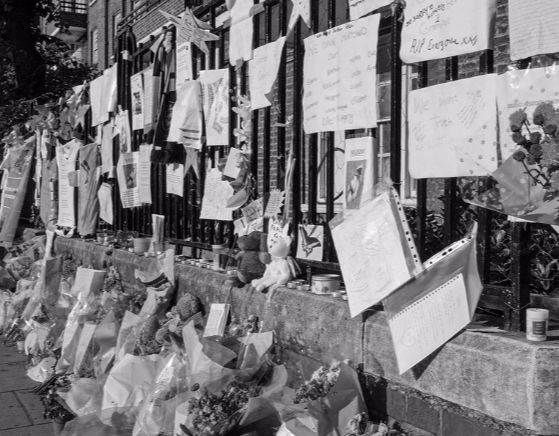My Thoughts on the Events at Grenfell Tower.

{source}
To Americans, the word projects is more likely to evoke thoughts of East Los Angeles, Queens, New York, or Chicago’s Cabrini Green.
Finding places for low-income families to live isn’t just an American problem though. England’s Grenfell Tower stands as an example of the dire state England’s housing system is in.
With proper evacuation routes in place, the 80 people who perished in the building fire that devoured Grenfell on August 24th, 2017, might have stood a better chance. Sadly, Grenfell is an example of market forces trampling human consideration. The state of Grenfell Tower and many other nearby housing projects makes living in the buildings a constant health hazard. But where else can tenants go?
No Answer for Grenfell Tenants
The British government claims to have found housing for the 129 families displaced when the tower nearly burned to the ground, but many of the families have not accepted the new living conditions the government has proposed.
Initially, tenants were told that they could relocate to nearby projects that offered less space and amenities compared to the homes they had in Grenfell. Another proposed solution was to relocate the displaced to buildings with a direct view of their destroyed former home. Understandably, only eight families accepted those offers.
The government proposal includes relocation for up to a year, however, after that year is up, tenants won’t be able to go back to Grenfell Tower. They’ll be forced to relocate to buildings that cost significantly more.
Denial Isn’t the Answer
At the very least, the government understands the tremendous embarrassment that would come with allowing these people to be forced out on the streets. Particularly after Kensington and Chelsea Tenant Management oversaw an entirely illegal renovation of the building but made no effort to improve the situation.
The British government seems embarrassed to admit that they ever allowed these social housing projects, but 30 years ago, they were commonplace in Great Britain and were even occupied by the nation’s social elite.
As the policies of neoliberalism promoted by Margaret Thatcher forced out social housing, the country’s poor were forced into places like Grenfell. Housing companies looking to cash in acquired the spaces and happily declared them livable.
However, the majority of them don’t receive proper inspections, sanitation, or care, and the government consistently chooses to turn a blind eye in a move they call pro-business, ignorant of or unwilling to take responsibility for the impact on their people.
The Lancaster West estate, where Grenfell is located, is the perfect example of the Neapolitan social climate that has grown up around these malnourished projects. As one tenant describes it, the borough is “extremely divided,” with “clean-looking white middle-class residents wandering around as if for some ‘tragedy tourism.’”
So what has the government who created this mess devised to do to resolve it? Do the words “let them eat cake” sound familiar?
Let them Live in Kensington
Marie Antoinette was French, but you still can’t help but laugh at the disillusion felt on all sides when the British government announced that Grenfell tenants would be relocated into a new 2 billion pound development in Kensington.
In fairness, there aren’t many other options. That does not, however, make it any more comfortable for the displaced families.
Apparently, there is a council deciding whether or not the newly relocated Grenfell residents will be asked to pay any form of rent. I have to assume that it will be drastically reduced from whatever existing renters in the Kensington building pay, and not nearly enough to quell the concerns of owners who feel these new inhabitants will affect their property values negatively (cry me a river).
Strength in Community
Despite the sizeable coffers of Kensington and Chelsea Organization, not to mention the British government, it seems the only steadfast resource available to social housing inhabitants is each other. Banners and signs have pockmarked other low-income housing areas of London since the events at the tower, expressing solidarity and demanding justice for Grenfell.
The British community has weathered immense challenges in the past. Grenfell has been called “London’s Katrina,” and indeed the recovery efforts that took place in America following the 2005 natural disaster can serve as inspiration, but that was not a situation created by neglect.
London is a small area with a housing problem that’s only getting worse. It’s time to stop sweeping these issues under the rug. How many have to die for the rich to take notice of the poor?
***
{Join us on Facebook, Twitter, Instagram & Pinterest}
